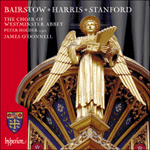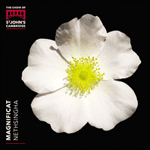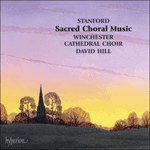
Welcome to Hyperion Records, an independent British classical label devoted to presenting high-quality recordings of music of all styles and from all periods from the twelfth century to the twenty-first.
Hyperion offers both CDs, and downloads in a number of formats. The site is also available in several languages.
Please use the dropdown buttons to set your preferred options, or use the checkbox to accept the defaults.

from notes by Jeremy Dibble © 1997
 Bairstow, Harris & Stanford: Choral works Bairstow, Harris & Stanford: Choral worksThree composers whose contributions to the Anglican choral tradition are rich in historical significance.» More |
 Magnificat, Vol. 1 Magnificat, Vol. 1Six settings of the Magnificat and Nunc dimittis old and new—by Stanford, Sumsion, Tippett, Leighton, Jackson and Howells—in fine performances from St John's Cambridge.» More |
 Stanford: Sacred choral music Stanford: Sacred choral musicThis three-disc set contains a generous selection of Stanford’s sacred choral music—settings for Matins, Evensong, motets, anthems and hymns—perfectly performed by Winchester Cathedral Choir at its best, conducted by David Hill.» More |

